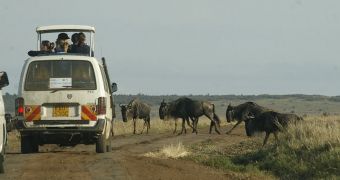Wind could represent the Chabi Desert community's most important resource which might improve the destiny of its members. Dutch and Kenyan investors have joined efforts with the African Development Bank, to build the most ambitious project the area has ever known.
They are talking about Africa's biggest wind plant, which will occupy 25,000 km of arid land. This project is estimated to cost approximately 585 million euros.
The company, Lake Turkana Wind Power hopes to be able to implement 350 effective wind turbines near Lake Turkana, which represent the biggest lake located in the desert in the whole world.
After completing this task, the enterprise hopes to be able to provide up to 300 megawatts of power every year, increasing Kenya's energetic potential by 30%.
At the same time, such a measure would help fight poverty and will boost the local economy, by creating several jobs for the people who are presently unemployed.
Chalbi Desert is one of the most arid areas in north Kenya, and it represents one of the poorest regions in the entire world. Here, only 1 in 25 people are actually employed, and most of the women and children spend their days begging for food and water.
The entire population depends on the support coming from charity organizations.
Lack of water, food and education are mixed together and their result is reflected by the numerous violent conflicts which shake the community almost every day.
Nowadays, when energy is practically one of our family members, only 20% of Kenya's inhabitants have access to electricity, and the percentage decreases to 4% when we take into consideration the individuals who live in rural areas.
After evaluating this context, it appears obvious that the country needs to experience a fast and effective development of alternative sources of energy.
Despite the fact that officials started making promises in 2009, regarding the advantages provided by Lake Turkana Wind Project, authorities forecast that the wind turbines will be installed next year. The local community will see the first results in 2013 and the new wind plant will function at its maximum capacity in 2014.
Also, experts warn that this project won't be 100% in the favor of the people who live in the area.
“First, local communities might not benefit from the power generated, second, the scale of the project site means reduced grazing land, third, concentration of people around the area will increase human activity leading to degradation of the land and lastly noise pollution from the turbines will definitely affect the residents,” declared Peter Njeru, from Food for the Hungry organization.
Nieru has suggested a list of disadvantages which might make Kenya's inhabitants even more miserable than they already are.

 14 DAY TRIAL //
14 DAY TRIAL //